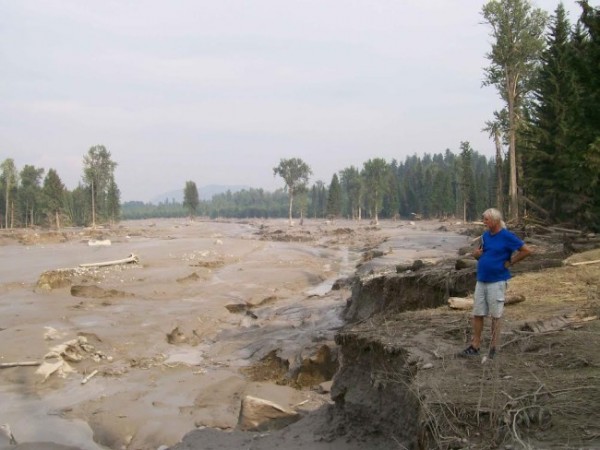A British Columbia mine that’s become a poster child for environmental disasters will soon begin discharging wastewater.
The Mount Polley Mine’s tailings dam broke in August 2014, releasing more than 6 billion gallons of silty water and mine-processing leftovers.

The provincial government granted permission to resume partial operations in July. But Mount Polley wasn’t allowed to discharge anything off its site. Instead, waste and water were routed to a large, mined-out pit.
Officials from a nearby town and two tribal governments recently warned the pit was close to full and could spill water and waste rock.
But British Columbia officials this week issued a permit allowing some of that to be treated and released.
Mining Minister Bill Bennett said there was no chance it would overflow and damage the environment anytime soon.
“The pit that the water and the tailings are going into is not close to, anywhere close actually, to the water being at the top. It’s not a situation where you have a potential for a breach or an overtopping at all,” Bennett says.
“It’s unfortunate that statements were made by those who really don’t have the facts.”
B.C.’s environment ministry says without releasing some water, the temporary tailings pit would overflow next April.
The new permit approves the mine’s plans for wastewater to go through a treatment plant and into a settlement pond. It will then be released about 100 feet below the surface of a nearby lake, the deepest in British Columbia.
Mount Polley is within the watershed of the Fraser River, which empties into the Pacific Ocean at Vancouver, B.C.
The Southeast Alaska Conservation Council’s Guy Archibald says it still should concern residents “because this is what we’ve come to expect from the B.C. permitting process,” Archibald says.
“For the mines that do drain into the transboundary rivers and potentially eventually into Southeast Alaska, we can expect the same, very shortsighted, rubber-stamp permitting process.”
Mount Polley’s proposed water-treatment system is temporary. Owner Imperial Metals must submit a long-term plan by the end of June.
The B.C. government says the treated water will be monitored. It must be safe for drinking and as well as aquatic organisms.
Watch a government video of the reclamation project.
Watch a critical video about the reclamation work.
Ed Schoenfeld is Regional News Director for CoastAlaska, a consortium of public radio stations in Ketchikan, Juneau, Sitka, Petersburg and Wrangell.
He primarily covers Southeast Alaska regional topics, including the state ferry system, transboundary mining, the Tongass National Forest and Native corporations and issues.
He has also worked as a manager, editor and reporter for the Juneau Empire newspaper and Juneau public radio station KTOO. He’s also reported for commercial station KINY in Juneau and public stations KPFA in Berkley, WYSO in Yellow Springs, Ohio, and WUHY in Philadelphia. He’s lived in Alaska since 1979 and is a contributor to Alaska Public Radio Network newscasts, the Northwest (Public Radio) News Network and National Native News. He is a board member of the Alaska Press Club. Originally from Cleveland, Ohio, he lives in Douglas.




